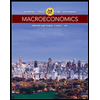
Differentiate industrially advanced countries (IAC) and less developed countries (LDC).
Explanation of Solution
Industrially advanced countries (IAC) have high income or high per capita
Less developed countries (LDC): The countries which are not included in IACs are categorized as less developed countries. The less developed countries are low income nations that are produced without advanced technology of capital and educated labors. Economy based on agriculture, poverty, and so on is the main features of LDCs. Countries like Nigeria, Angola, Congo, Sudan, Zimbabwe, and so on are some examples of less developed countries (LDCs).
Industrially Advanced Countries (IACs): IACs are the industrialized countries which will be advanced socially, technologically, and in infrastructural sectors compared to the developing countries.
Want to see more full solutions like this?
Chapter 30 Solutions
Economics For Today
- Critically analyse the five (5) characteristics of Ubuntu and provide examples of how they apply to the National Health Insurance (NHI) in South Africa.arrow_forwardCritically analyse the five (5) characteristics of Ubuntu and provide examples of how they apply to the National Health Insurance (NHI) in South Africa.arrow_forwardOutline the nine (9) consumer rights as specified in the Consumer Rights Act in South Africa.arrow_forward
- In what ways could you show the attractiveness of Philippines in the form of videos/campaigns to foreign investors? Cite 10 examples.arrow_forwardExplain the following terms and provide an example for each term: • Corruption • Fraud • Briberyarrow_forwardIn what ways could you show the attractiveness of a country in the form of videos/campaigns?arrow_forward




 Economics Today and Tomorrow, Student EditionEconomicsISBN:9780078747663Author:McGraw-HillPublisher:Glencoe/McGraw-Hill School Pub Co
Economics Today and Tomorrow, Student EditionEconomicsISBN:9780078747663Author:McGraw-HillPublisher:Glencoe/McGraw-Hill School Pub Co Macroeconomics: Private and Public Choice (MindTa...EconomicsISBN:9781305506756Author:James D. Gwartney, Richard L. Stroup, Russell S. Sobel, David A. MacphersonPublisher:Cengage Learning
Macroeconomics: Private and Public Choice (MindTa...EconomicsISBN:9781305506756Author:James D. Gwartney, Richard L. Stroup, Russell S. Sobel, David A. MacphersonPublisher:Cengage Learning





